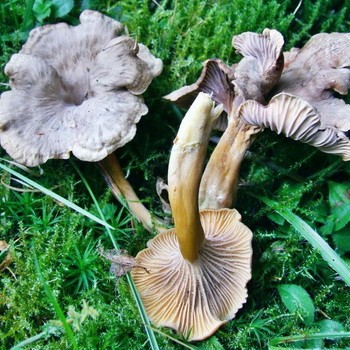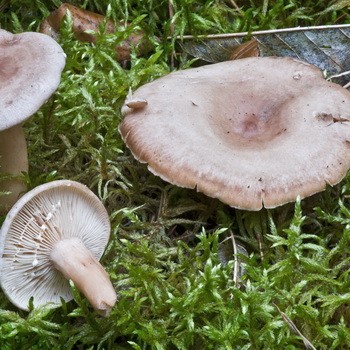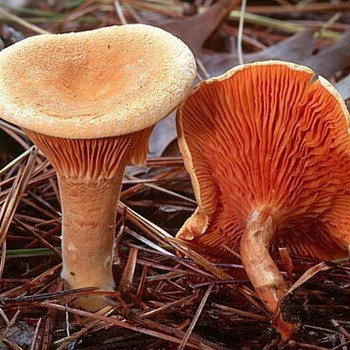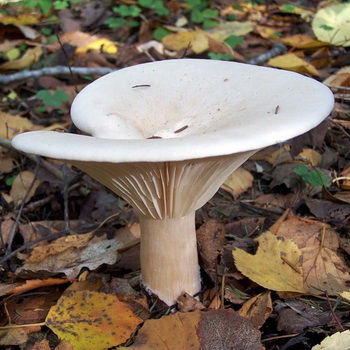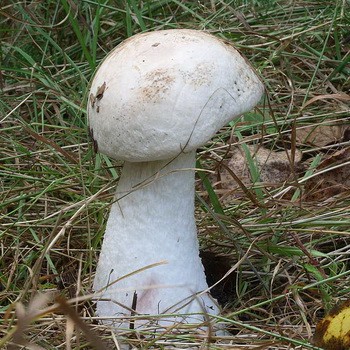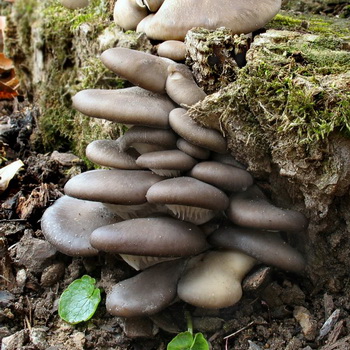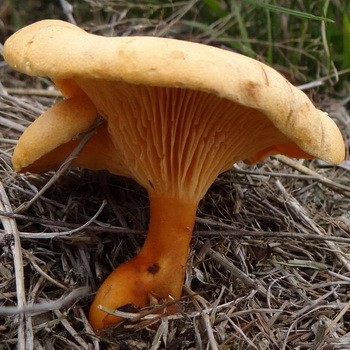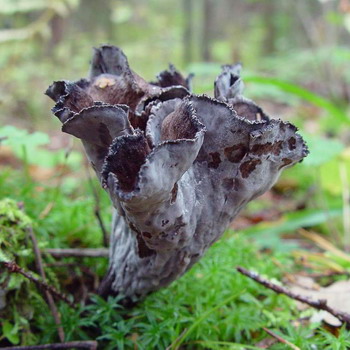What do chanterelles look like: photos, description of mushrooms

In this article you will receive information on how to distinguish chanterelles from false mushrooms and find out in which forests chanterelles grow. You can also see photos and descriptions of chanterelles of various species.
Content
In what forests common chanterelles grow
Category: edible.
Other names: real fox.
Hat of common chanterelle (Cantharellus cibarius) (diameter 3-14 cm): yellow or orange, irregularly shaped. It can be either concave or convex, funnel-shaped or prostrate.
Leg (height 3-10 cm): solid and thick, usually grows together with a hat and has a color similar to it. Expands from bottom to top.
Pulp: white, dense and very fleshy, and may be fibrous. Blushes a little when pressed. The taste of freshly cut mushrooms is slightly sour, and the aroma resembles the smell of dried fruit.

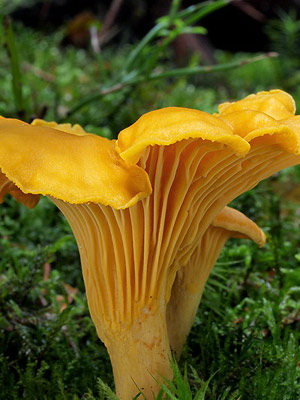
As you can see in the photo, the edges of the chanterelle are usually wavy and bent down. The peel, which is difficult to separate from the cap, is smooth to the touch.
How to distinguish false chanterelles from ordinary
Doubles: poisonous chanterelle fox (Hygrophoropsis aurantiaca) and olive olives (Omphalotus olearius). False is easy to distinguish at the place of growth: this mushroom never grows on soil, only on rotting wood or forest litter. And omphaloth, a deadly poisonous mushroom, is distributed exclusively in the subtropical zone, and besides, it can only be found on wood dust.
Ordinary chanterelle can also be confused with edible chanterelles - faceted (Cantharellus lateritius) and velvety (Cantharellus friesii). This is not a big deal, but it’s worth remembering a few differences.
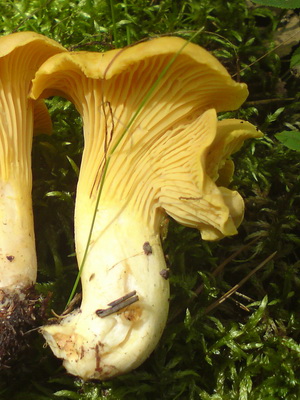
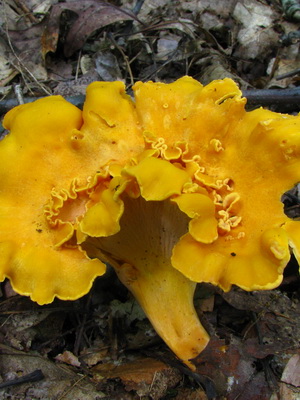
Pay attention to the photo of the faceted chanterelle mushroom: its flesh is very brittle, moreover, it grows only in North America. Identifying how velvet chanterelle mushrooms look is more difficult. They differ only in a brighter color. For a more detailed analysis, laboratory conditions are needed.
Chanterelles in the forest and photo of mushrooms
In the forest, chanterelles grow from mid-June to early October. In artificial conditions, their cultivation is not practiced.
These mushrooms can be found in almost all types of natural green spaces, but most often near oak, birch, spruce and pine.
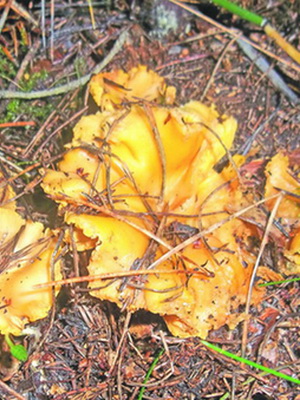
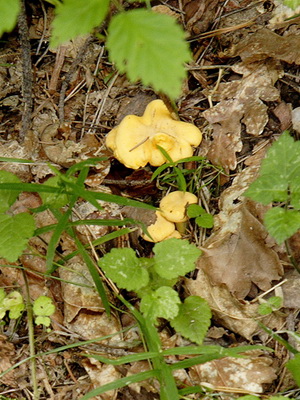
Look at the photo of the chanterelle in the forest: it can bury itself in moss or fallen leaves. A feature of ordinary chanterelles is their massive appearance after heavy rains with thunderstorms.
Important! Do not collect chanterelles near industrial plants, as this fungus can accumulate the cesium-137 radioactive nuclide.
The use of chanterelles in cooking
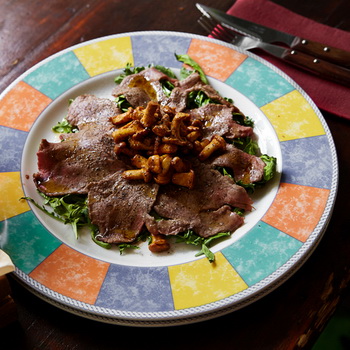 The use of these mushrooms in European cuisines is extremely wide. The use of chanterelles in cooking is due to the delicious taste: the mushroom is beautiful in almost any form. Chanterelles contain eight essential amino acids, as well as copper, zinc and vitamins A, B1, PP.
The use of these mushrooms in European cuisines is extremely wide. The use of chanterelles in cooking is due to the delicious taste: the mushroom is beautiful in almost any form. Chanterelles contain eight essential amino acids, as well as copper, zinc and vitamins A, B1, PP.
In addition, this mushroom is a kosher food allowed for devotees of Judaism due to the fact that because of its immunity to parasites, the prohibition “All winged reptiles and insects are unclean for you, do not eat them” is circumvented (Deuteronomy 14: 3-20). If the chanterelle rots, a clearly damaged place is clearly visible on it.
Application in traditional medicine (data not confirmed and not passed clinical trials!): effective in the fight against liver diseases, including some forms of hepatitis.
Tubular fox and her photo
Category: edible.
Hat of the chanterelle chanterelle (Cantharellus tubaeformis) (diameter 3-8 cm): predominantly yellow-brown, has a funnel shape characteristic of almost the entire family. Often on it you can see small dark scales.
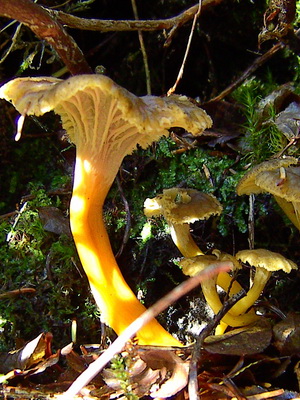
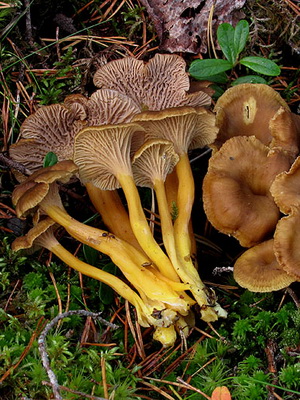
Pay attention to what the fox looks like in the photo: in a tubular appearance, uneven edges usually bend toward the inside.
Leg (height 4-10 cm): tubular, has a cylindrical shape and a yellowish color, fades greatly with time.
Pulp: white and dense. Either has no taste at all, or a little bit bitter. When breaking, it gives off a fuzzy, pleasant smell of moist earth.
Doubles:funnel cone (Craterellus cornucopioides) and yellow fox (Cantharellus lutescens). The fresh funnel is darker in color, and the yellowing fox has smaller sizes and a hat and leg differing in color.
When growing: from early September to mid-December in the northern half of the Eurasian continent.
Where can I find: on acidic soils of coniferous or mixed forests.
Eating: in almost any form. True, some mushrooms can be harsh, so they need to be boiled for a long time.
Application in traditional medicine (data not confirmed and not passed clinical trials!): possesses anthelmintic properties.
Other names: cantarell tubular, chanterelle funnel, tubular lobe.
